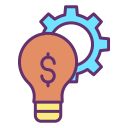Data Privacy, Trust, and Ethical Design
Clear explanations about what data is collected, why it is needed, and how it is protected empower users to say yes confidently. Transparency reduces fear and fosters a healthy learning environment where people can focus on improving skills, not guarding secrets.
Data Privacy, Trust, and Ethical Design
Granular controls let users opt into features like personalized insights without surrendering everything. Reversible switches and readable summaries respect autonomy, teaching an important literacy skill: understanding privacy trade-offs in exchange for convenience and tailored support.






